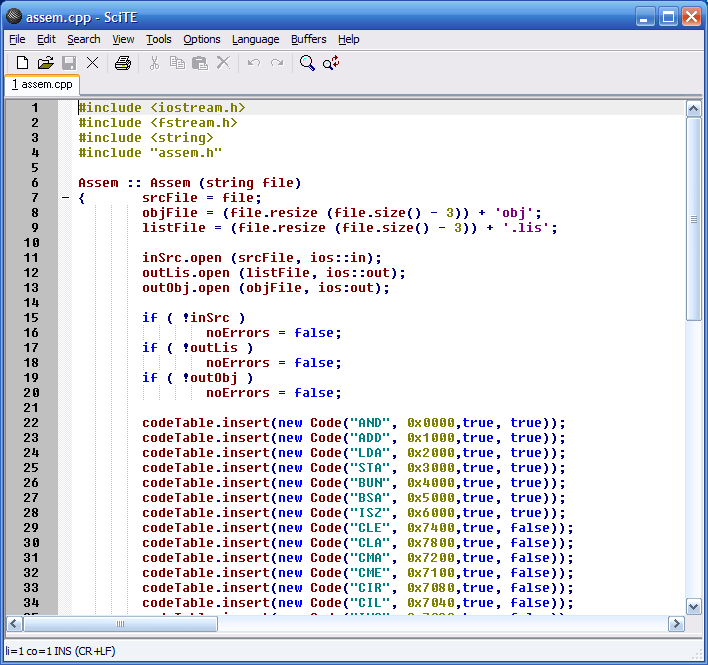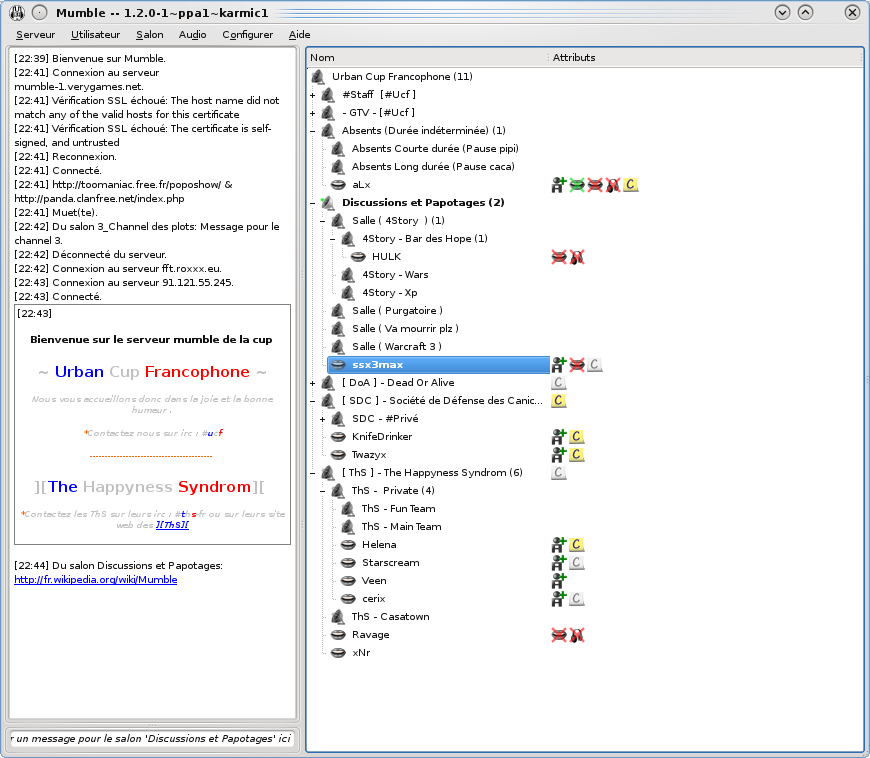Qt for Mac OS X has some requirements that are given in more detail in the Qt for Mac OS X Requirements document.
Qt Creator is an open source and multi-platform IDE (integrated development environment) created to provide developers with all the tools needed to build various types of mobile and desktop based software solutions with the help of the Qt framework. User-friendly and clean styled interface. Quicktime for mac free download - Apple QuickTime, QuickTime Converter, Bigasoft QuickTime Converter, and many more programs. VMware InstallBuilder for Qt for Mac List Price: 1137,39 € Price: 1137,39 € With InstallBuilder, you can quickly create dynamic, professional installers for Linux, Windows, Mac OS X, Solaris and other platforms from a single project file and build environment. Official documentation. Refer to the official docs to get started on macOS. Development happens in the 5.15 and dev branches of the pyside-setup repository.The top level repository has the following submodules.
The following instructions describe how to install Qt from the source package.
For the binary package, simply double-click on the Qt.mpkg and follow the instructions to install Qt. You can later run the uninstall-qt.py script to uninstall the binary package. The script is located in /Developer/Tools and must be run as root.
Note: Do not run the iPhone simulator while installing Qt. The iPhone simulator conflicts with the package installer.
Step 1: Install the License File (commercial editions only)
If you have the commercial edition of Qt, install your license file as $HOME/.qt-license.
For the open source version you do not need a license file.
Unpack the archive if you have not done so already. For example, if you have the qt-everywhere-opensource-src-%VERSION%.tar.gz package, type the following commands at a command line prompt:

This creates the directory /tmp/qt-everywhere-opensource-src-%VERSION% containing the files from the archive.
Step 2: Build the Qt Library
To configure the Qt library for your machine type, run the ./configure script in the package directory.
By default, Qt is configured for installation in the /usr/local/Trolltech/Qt-%VERSION% directory, but this can be changed by using the -prefix option.
Type ./configure -help to get a list of all available options.
Note that you will need to specify -universal if you want to build universal binaries, and also supply a path to the -sdk option if your development machine has a PowerPC CPU. By default, Qt is built as a framework, but you can built it as a set of dynamic libraries (dylibs) by specifying the -no-framework option.
Qt can also be configured to be built with debugging symbols. This process is described in detail in the Debugging Techniques document.
To create the library and compile all the demos, examples, tools, and tutorials, type:
If -prefix is outside the build directory, you need to install the library, demos, examples, tools, and tutorials in the appropriate place. To do this, type:
This command requires that you have administrator access on your machine.
Note: There is a potential race condition when running make install with multiple jobs. It is best to only run one make job (-j1) for the install.
If you later need to reconfigure and rebuild Qt from the same location, ensure that all traces of the previous configuration are removed by entering the build directory and typing make confclean before running configure again.
Transmission-qt For Mac
Step 3: Set the Environment variables
In order to use Qt, some environment variables need to be extended.
This is done like this:
In .profile (if your shell is bash), add the following lines:
In .login (in case your shell is csh or tcsh), add the following line:
If you use a different shell, please modify your environment variables accordingly.

That's all. Qt is now installed.
Qt Demos and Examples
If you are new to Qt, we suggest that you take a look at the demos and examples to see Qt in action. Run the Qt Examples and Demos either by typing qtdemo on the command line or through the desktop's Start menu.
You might also want to try the following links:
We hope you will enjoy using Qt. Good luck!
© 2016 The Qt Company Ltd. Documentation contributions included herein are the copyrights of their respective owners. The documentation provided herein is licensed under the terms of the GNU Free Documentation License version 1.3 as published by the Free Software Foundation. Qt and respective logos are trademarks of The Qt Company Ltd. in Finland and/or other countries worldwide. All other trademarks are property of their respective owners.
macOS (previously known as OS X or Mac OS X) is Apple's operating system for the Mac line of computers. It's a UNIX platform, based on the Darwin kernel, and behaves largely similar to other UNIX-like platforms. The main difference is that X11 is not used as the windowing system. Instead, macOS uses its own native windowing system that is accessible through the Cocoa API.
To download and install Qt for macOS, follow the instructions on the Getting Started with Qt page.
Supported Versions
When talking about version support on macOS, it's important to distinguish between the build environment; the platform you're building on or with, and the target platforms; the platforms you are building for. The following macOS versions are supported.
| Target Platform | Architecture | Build Environment |
|---|---|---|
| macOS 10.12, 10.13, 10.14 | x86_64 and x86_64h | Xcode 10 (10.14 SDK), Xcode 9* (10.13 SDK) |
Note: Xcode 9 is only supported for application development (to be able to opt out of features such as layer-backing and dark mode), not for development of Qt itself.
Build Environment
The build environment on macOS is defined entirely by the Xcode version used to build your application. Xcode contains both a toolchain (compiler, linker, and other tools), and a macOS platform-SDK (headers and libraries). Together these define how your application is built.
Note: The version of macOS that you are running Xcode on does not matter. As long as Apple ships a given Xcode version that runs on your operating system, the build environment will be defined by that Xcode version.
Xcode can be downloaded from Apple's developer website (including older versions of Xcode). Once installed, choosing an Xcode installation is done using the xcode-select tool.
You can inspect the globally selected Xcode installation using the same tool.
The xcrun command can then be used to find a particular tool in the toolchain.
or show the platform SDK path used when building.
Target Platforms
Building for macOS utilizes a technique called weak linking that allows you to build your application against the headers and libraries of the latest platform SDK, while still allowing your application to be deployed to macOS versions lower than the SDK version. When the binary is run on a macOS version lower than the SDK it was built with, Qt will check at runtime whether or not a platform feature is available before utilizing it.
In theory this would allow running your application on every single macOS version released, but for practical (and technical) reasons there is a lower limit to this range, known as the deployment target of your application. If the binary is launched on a macOS version below the deployment target macOS or Qt will give an error message and the application will not run.
Qt expresses the deployment target via the QMAKE_MACOSX_DEPLOYMENT_TARGET qmake variable, which has a default value set via the makespec for macOS. You should not need to change this default, but if needed you can increase it in your project file:
Note: You should not lower the deployment target beyond the default value set by Qt. Doing so will likely lead to crashes at runtime if the binary is then deployed to a macOS version lower than what Qt expected to run on.
By always building against the latest available platform SDK, you ensure that Qt can take advantage of new features introduced in recent versions of macOS.
For more information about SDK-based development on macOS, see Apple's developer documentation.
Opting out of macOS behavior changes
One caveat to using the latest Xcode version and SDK to build your application is that macOS's system frameworks will sometimes decide whether or not to enable behavior changes based on the SDK you built your application with.
For example, when dark-mode was introduced in macOS 10.14 Mojave, macOS would only treat applications built against the 10.14 SDK as supporting dark-mode, and would leave applications built against earlier SDKs with the default light mode look. This technique allows Apple to ensure that binaries built long before the new SDK and operating system was released will still continue to run without regressions on new macOS releases.
A consequence of this is that if Qt has problems dealing with some of these macOS features (dark-mode, layer-backed views), the only way to opt out of them is building with an earlier SDK (the 10.13 SDK, available through Xcode 9). This is a last-resort solution, and should only be applied if your application has no other ways of working around the problem.
Qt For Mac
Architectures

By default, Qt is built for x86_64. To build for x86_64h (Haswell). use the QMAKE_APPLE_DEVICE_ARCHSqmake variable. This is selectable at configure time:
QMAKE_APPLE_DEVICE_ARCHS can also be specified as a space-delimited list in order to build for multiple architectures simultaneously:
Additional Command-Line Options
On the command-line, applications can be built using qmake and make. Optionally, qmake can generate project files for Xcode with -spec macx-xcode. If you are using the binary package, qmake generates Xcode projects by default; use -spec macx-gcc to generate makefiles. For example:

Configuring with -spec macx-xcode generates an Xcode project file from project.pro. With qmake you do not have to worry about rules for Qt's preprocessors (moc and uic) since qmake automatically handles them and ensures that everything necessary is linked into your application.
Qt does not entirely interact with the development environment (for example plugins to set a file to 'mocable' from within the Xcode user interface).
The result of the build process is an application bundle, which is a directory structure that contains the actual application executable. The application can be launched by double-clicking it in Finder, or by referring directly to its executable from the command line, for example, myApp.app/Contents/MacOS/myApp.
Qt For Mac Download
If you wish to have a command-line tool that does not use the GUI for example, moc, uic or ls, you can tell qmake to disable bundle creation from the CONFIG variable in the project file:
Deploying Applications on macOS
macOS applications are typically deployed as self-contained application bundles. The application bundle contains the application executable as well as dependencies such as the Qt libraries, plugins, translations and other resources you may need. Third party libraries like Qt are normally not installed system-wide; each application provides its own copy.
Qt Creator For Mac
A common way to distribute applications is to provide a compressed disk image (.dmg file) that the user can mount in Finder. The deployment tool, macdeployqt (available from the macOS installers), can be used to create the self-contained bundles, and optionally also create a .dmg archive. Applications can also be distributed through the Mac App Store. Qt 5 aims to stay within the app store sandbox rules. macdeployqt (bin/macdeployqt) can be used as a starting point for app store deployment.
macOS Issues
The page below covers specific issues and recommendations for creating macOS applications.
Where to Go from Here
We invite you to explore the rest of Qt. We prepared overviews to help you decide which APIs to use and our examples demonstrate how to use our API.
- Qt Overviews - list of topics about application development
- Examples and Tutorials - code samples and tutorials
- Qt Reference Pages - a listing of C++ and QML APIs
Qt's vibrant and active community site, http://qt.io houses a wiki, a forum, and additional learning guides and presentations.
© 2020 The Qt Company Ltd. Documentation contributions included herein are the copyrights of their respective owners. The documentation provided herein is licensed under the terms of the GNU Free Documentation License version 1.3 as published by the Free Software Foundation. Qt and respective logos are trademarks of The Qt Company Ltd. in Finland and/or other countries worldwide. All other trademarks are property of their respective owners.
